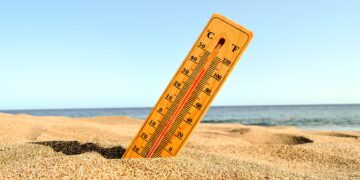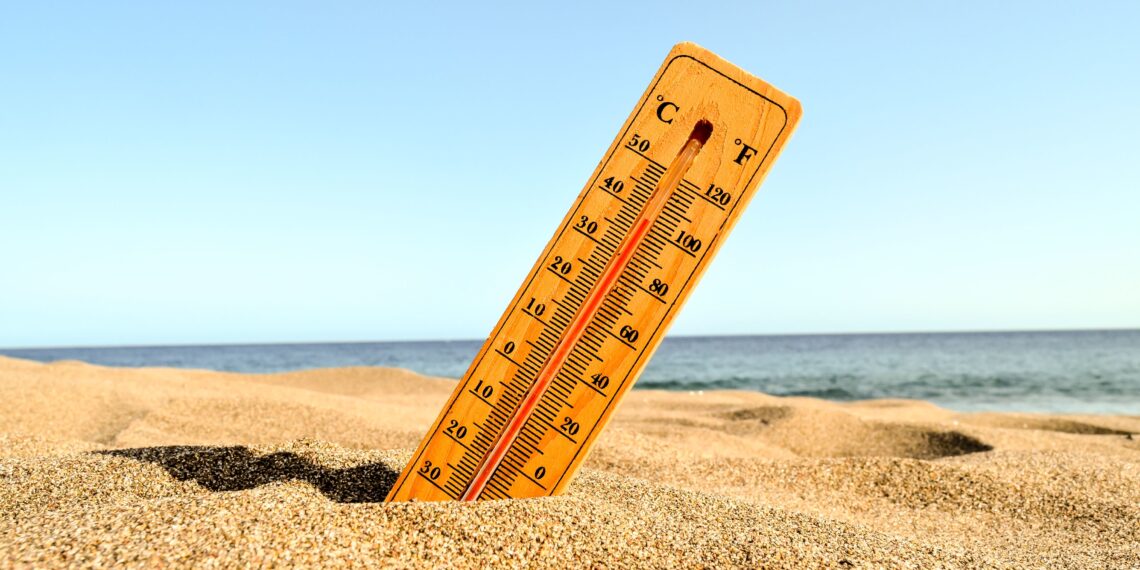The heat advisory extended across regions highlights the growing effects of climate change. These warnings also help us take vital steps for better health and safety.
In recent years, heatwaves have become more frequent and intense. These have lead to the extension of heat advisories across many regions. As global temperatures rise, the significance of understanding and responding to these advisories has never been more crucial. Whether you’re in Phoenix, Las Vegas, or other areas prone to extreme temperatures, staying informed and prepared can save lives. Let’s explore the importance of heat advisories, what they mean, and how you can protect yourself from heat-related illnesses.

What is a Heat Advisory?
A heat advisory is issued by the National Weather Service (NWS). This advisory is issued when dangerous heat conditions are expected within the next 24 hours. These advisories are typically triggered when temperatures are expected to reach 100°F or more. Likewise, they are triggered when the Heat Index (the “feels like” temperature) is forecast to hit 105°F or higher. The heat index takes both temperature and humidity into account. Meaning, how the body struggles to cool down in humid conditions is a factor related to the index.
A heat advisory urges residents to take immediate precautions to prevent heat-related illnesses such as heat exhaustion or heat stroke. This often involves limiting outdoor activities, staying hydrated, and seeking air-conditioned environments. For vulnerable populations, such as the elderly and people with pre-existing health conditions, the risks are even higher.
Heat Advisory Extended: What You Need to Know
The extended heat advisory alerts have become a critical topic. Especially when extreme heat events become more frequent, impacting regions across the globe. This past summer, Phoenix, Arizona, recorded temperatures surpassing 113°F, breaking multiple records. The National Weather Service (NWS) issued an extended Excessive Heat Warning for parts of Arizona and California. This extended well into October, highlighting the dangerous conditions persisting far beyond the typical summer months.
The Importance of Heat-Related Alerts
Heat is the #1 weather-related killer in the United States. So, the National Weather Service plays a crucial role in issuing heat advisories to protect public health. Heat advisories and warnings are issued to alert people about impending dangerously high temperatures. Recently, Phoenix and Las Vegas have faced record-breaking heatwaves. It also shows its advisories extended due to prolonged high temperatures, unusual for this time of year. These advisories help the public take necessary precautions, but more importantly, they highlight the increasing threat posed by climate change.
Record-Breaking Heat in 2024: A Global Issue
In 2024, cities worldwide experienced some of the hottest temperatures on record. Phoenix, which usually faces extreme summer heat, saw unprecedented temperatures, reaching as high as 114°F in late September and October—well beyond its typical hot season. Las Vegas also broke records with a high of 104°F in early October. The NWS extended heat warnings multiple times as cities experienced unusually high temperatures for extended periods, leading to widespread concern over the global climate crisis.
How Does Heat Impact Public Health?
As temperatures rise above 100°F and the Heat Index crosses 105°F, the body’s ability to cool itself through sweating becomes impaired, increasing the risk of heat-related illnesses like heat stroke and dehydration. In Maricopa County, Arizona, there were already 283 confirmed heat-related deaths by September 2024, with hundreds more under investigation. These numbers represent a stark reminder of how extreme heat disproportionately affects vulnerable populations, such as the elderly, children, and people with pre-existing medical conditions.
Why Are Heat Advisories Being Extended?
As climate change intensifies, heat advisories and warnings are being extended far more often than in previous years. Phoenix broke its own record for the number of 110°F+ days, reaching 63 by the end of September 2024. With the planet continuing to warm, regions that previously saw heatwaves limited to summer months now find themselves facing dangerous conditions well into autumn. Scientists warn that extreme heat events, like those in Arizona, will likely become the norm if global temperatures continue to rise.
The extension of heat advisories has become a common occurrence due to prolonged periods of extreme weather. Cities like Phoenix and Las Vegas have recently experienced record-breaking heat, with temperatures exceeding 110°F for consecutive days. Climate change has been a major factor, as it has led to more frequent and prolonged heatwaves across the globe.
In some cases, heat advisories are extended when meteorological data predicts that the high temperatures will persist longer than initially expected. These extended periods of excessive heat can be dangerous if people do not take proper precautions, which is why local authorities and weather services are quick to extend warnings when necessary.
How to Stay Safe During a Heat Advisory
While enduring extreme heat can be uncomfortable, it is essential to follow safety guidelines to avoid serious health risks:
- Stay Indoors: Try to remain in air-conditioned buildings as much as possible, especially during the hottest parts of the day, typically between 10 a.m. and 6 p.m.
- Hydrate: Drink plenty of water, even if you do not feel thirsty. Avoid alcohol and caffeine, as they can dehydrate you.
- Dress Appropriately: Wear light-coloured, loose-fitting clothing to help your body cool down.
- Limit Outdoor Activities: If you must go outside, do so early in the morning or late in the evening. Take frequent breaks and rest in the shade.
- Check on Others: Ensure that elderly family members, young children, and people with medical conditions are staying cool and hydrated.
- Avoid Leaving Children or Pets in Cars: Temperatures inside a car can rise dangerously high, even on seemingly mild days.
Safety Measures During Heat Waves
During extended heat advisories, public health officials urge people to minimise outdoor activities, especially between 10 a.m. and 6 p.m., when the sun is at its peak. In regions like Phoenix, even popular hiking trails at Camelback Mountain are closed during excessive heat warnings to protect visitors from the risk of heatstroke. Authorities recommend seeking refuge in cooling shelters or air-conditioned buildings, staying hydrated, and avoiding caffeinated or alcoholic beverages, which can exacerbate dehydration.
Reecom Weather Radios: A Lifeline During Heat Advisories
In the face of frequent and extended heat advisories, Reecom weather radios have become an essential tool for those in areas prone to extreme heat. These radios are equipped with automatic alerts that notify users when a heat advisory is in effect, ensuring people are aware of the dangerous conditions. This is particularly helpful in rural areas or regions with unstable internet connections, as Reecom radios rely on NOAA’s Weather Radio broadcasts to keep users informed.
Why Heat Advisories Are Issued Earlier
Another pressing concern is why heat advisories are being issued sooner than in previous years. The answer largely lies in the shifting climate patterns. As summers become hotter earlier in the season, heat advisories are being issued at unprecedented times. This is a significant change compared to previous decades when such advisories were more commonly seen in the peak of summer, rather than extending well into the autumn months.
Local authorities are working closely with meteorological experts to ensure that warnings are communicated as early as possible to give people ample time to prepare. It is crucial to understand that the earlier these warnings come, the more time we have to implement preventive measures, especially for those who are more vulnerable.
Conclusion
Heat advisories are more than just warnings; they are essential tools to help people stay safe during extreme heat. With the rise in global temperatures, the extension of these advisories is becoming more common. Staying informed, taking precautions, and checking on vulnerable people in your community can make a significant difference in reducing the health risks posed by extreme heat. As we continue to adapt to these new weather patterns, let’s prioritise safety and mindful living, ensuring that we stay cool and protected during these unprecedented times.
This news article explains the state of Arizona, amidst its current heat crisis – Arizona Rising Heat.
FAQs
Does the Reecom weather radio have heat advisories?
Yes, Reecom weather radios are equipped to receive heat advisories, along with other weather alerts such as tornado and flood warnings. They are connected to the NOAA Weather Radio network, ensuring real-time updates.
How do I get Alexa to stop warning about heat advisories?
To stop Alexa from giving heat advisory notifications, you can open the Alexa app, go to “Settings,” then “Notifications,” and turn off weather alerts. Keep in mind that this will stop all weather alerts, including those for tornadoes and floods.
Why is the heat advisory extending?
Heat advisories are often extended when forecasts show that dangerous temperatures will persist longer than initially predicted. Prolonged heat events increase the risk of heat-related illnesses, necessitating the extension of these warnings.
When should I open windows in summer during a heat advisory??
During a heat advisory, it’s best to keep windows closed, especially during the day when temperatures are high. If the temperature drops significantly in the evening or at night, you can open windows to allow cooler air to circulate.
Why are heat advisories being issued sooner than in previous years?
Due to climate change and rising global temperatures, heatwaves are occurring earlier in the year. This has led to advisories being issued well before the traditional peak summer months, as extreme weather becomes more frequent.





























